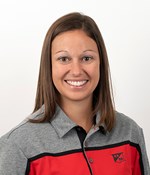Product and Agronomy Research (PAR) Results: Ultra-High Yield Corn & Soybeans
BY Dairyland Seed Agronomy Team
Ultra-High Yield Corn & Soybeans
Description:
The quest for extreme top yields continues in corn and soybeans. This research focuses standard production practices versus intensive management for top yields. Although profitability is of concern the main goal is to maximize yield in this scenario. In both crops, standard treatments were used versus adding various levels of inputs including irrigation, fungicides, insecticides, micronutrients, humics, plants sugars, Utrisha N and biologicals.
Seed products used are:
- Soybeans: DSR-3177E™, DSR-3256E™, DSR-3499E™ and DSR-2717E™
- Corn: DS-5144Q™, DS-5250AM™, DS-5279Q™ and DS-5383AM™
Soybean high yield plan included:
- Plant tissue samples throughout the year – no deficiencies
- 105,000 seeding rate in 30” rows
- Approach Prima fungicide
- Insecticide at R3
- Pop-up at planting which included humic acid, fulvic acid, plant growth regulators and sugars
- 2x2 placement of potassium thiosulfate
- R1 application of a micronutrient pack and additional fulvic acid and sugars
Standard soybean plan included:
- Seed treatment fungicide, insecticide and ILeVO
- Approach Prima fungicide
- Insecticide at R3
Corn high yield plan included:
Plan 1:
Nitrogen total 210 units as follows:
40 units through planter
120 units at sidedress at V5
50 units Y drop at V10
All three N applications also included humic acid, boron, sugars, ammonium thiosulfate
Plan 2:
Nitrogen 270 units as follows:
40 units through planter
100 units at sidedress
65 units Y drop at V10
65 units Y drop at VT
All four N applications also included humic acid, boron, sugars, ammonium thiosulfate
Standard corn plan included:
Nitrogen total 200 units as follows:
40 units through planter
160 units at sidedress V5
Results:
2022 Wabash PAR Location Soybeans
|
VARIETY |
PLAN |
YIELD |
|
DSR-2717E™ |
Standard |
74.5 |
|
DSR-2717E™ |
Plan 1 |
75.7 |
|
DSR-3499E™ |
Standard |
81.2 |
|
DSR-3499E™ |
Plan 1 |
80.65 |
|
DSR-3256E™ |
Standard |
71.9 |
|
DSR-3256E™ |
Plan 1 |
72.69 |
|
DSR-3177E™ |
Standard |
69.6 |
|
DSR-3177E™ |
Plan 1 |
70.5 |
|
Average |
Standard |
74.3 |
|
Average |
Plan 1 |
74.9 |
2022 Wabash PAR Location Corn
|
HYBRID |
PLAN |
YIELD NON-IRRIGATED |
YIELD IRRIGATED |
|
DS-5095AM™ |
Standard |
265.0 |
271.0 |
|
DS-5095AM™ |
Plan 1 |
266.0 |
273.0 |
|
DS-5095AM™ |
Plan 2 |
266.0 |
288.8 |
|
DS-5250AM™ |
Standard |
262.0 |
275.8 |
|
DS-5250AM™ |
Plan 1 |
235.0 |
261.5 |
|
DS-5250AM™ |
Plan 2 |
253.0 |
287.3 |
|
DS-5279Q™ |
Standard |
267.0 |
266.0 |
|
DS-5279Q™ |
Plan 1 |
268.0 |
264.0 |
|
DS-5279Q™ |
Plan 2 |
280.0 |
297.0 |
|
DS-5383AM™ |
Standard |
250.2 |
251.1 |
|
DS-5383AM™ |
Plan 1 |
250.5 |
246.5 |
|
DS-5383AM™ |
Plan 2 |
257.8 |
280.8 |
|
|
|
260.0 |
271.9 |
2022 Wabash PAR Corn Summary
|
|
YIELD |
|
Standard |
263.51 |
|
Plan 1 |
258.06 |
|
Plan 2 |
276.34 |
|
Irrigated |
271.90 |
|
Non-Irrigated |
260.04 |
|
Overall |
266.00 |
Discussion:
The corn plots were not replicated in an exact sense. Rather, as an aggregate combining all hybrids and we had multiple looks at the results of each management plan. With one year of limited data, the information was carefully evaluated and compared with similar research. The one data standout was the effect of irrigation which was to be expected. This difference was over 11 bushel per acre advantage for irrigation. We did see a positive response of over 13 bushels using the Plan 2 management option. What seems to be a bit perplexing was Plan 1 performance. That treatment had 10 more units of N than the standard and had N applied at similar timings with more split timing of the applications. Natural variance in the experiment could be the cause as well. Even taking this into account there still seems to exist a strong response to our Plan 2 management scheme. The question as always is the economics of this plan.
The soybean plots were not split by irrigation and had two replications of treatments by variety. Each plan was replicated in sense 8 times. So, 4 varieties by two replications. There seemed to be little response from the increased management which resulted in an advantage of about .6 bushel. Most every soybean variety did respond positively to the increased management. The one exception was DSR-3499E™. This variety is a very high yielding genetic line to begin with so perhaps that is why there was a limited response. As with the corn results, the question is will this compensate the grower for the added management costs?
 |
 |
 |
 |
 |
| Brian Weller Western Region 507.456.3034 |
Dan Ritter Central Region 219.863.0583 |
Branden Furseth Northern Region 608.513.4265 |
Mark Gibson Eastern Region 260.330.8968 |
Amanda Goffnett Eastern Region 989.400.3793 |
